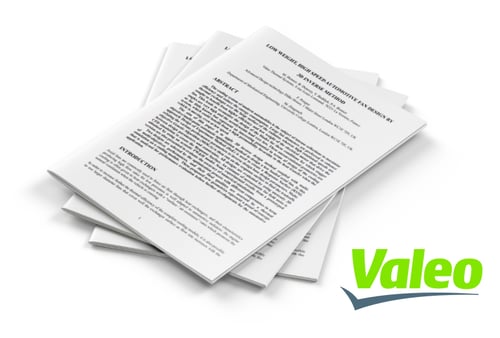Low Weight, High Speed Automotive Fan Design by 3D Inverse Design Method
What's inside?
The cooling system of modern automobiles is the subject of intense reflections to maximize efficiency and reduce the energy consumption. Large fan diameters are preferred to enhance thermal exchanges over the large surface of the radiator, whereas high rotational speeds are sought to benefit from higher efficiency and low weight of the electrical motor that drive the fan. This leads to reconsider the design of the blades for these conditions for which stagger angles are very high and the aerodynamic load very low.
The aim of this paper is to apply 3D inverse design method coupled with multiobjective/multi-point automatic optimization method to design a low loaded axial fan. In this approach Design of Experiment Method (DoE) is used to create a Response Surface (RSM) relating the various performance parameters to inverse design base design parameters. Multiobjective Genetic Algorithm (MOGA) is then run on the response surface to find the tradeoffs between design parameters and constraints.
Two designs are selected by the optimization process with different compromises in term of multi-objectives performances, and their final qualities are assessed by a thermal simulation on a cooling module. These proposed new geometries represent a proof of concept that is analyzed for performance evaluation before further developments for the automotive application.

In this publication, you will:
- Learn how the objectives of high speed and a good compromise between performance at both nominal point and high flow rate were met.
- Understand the challenge of low loaded fans being barely known and that there's little previous experience of this type of design.
- Discover how engineers chose two optimization processes with different compromises.